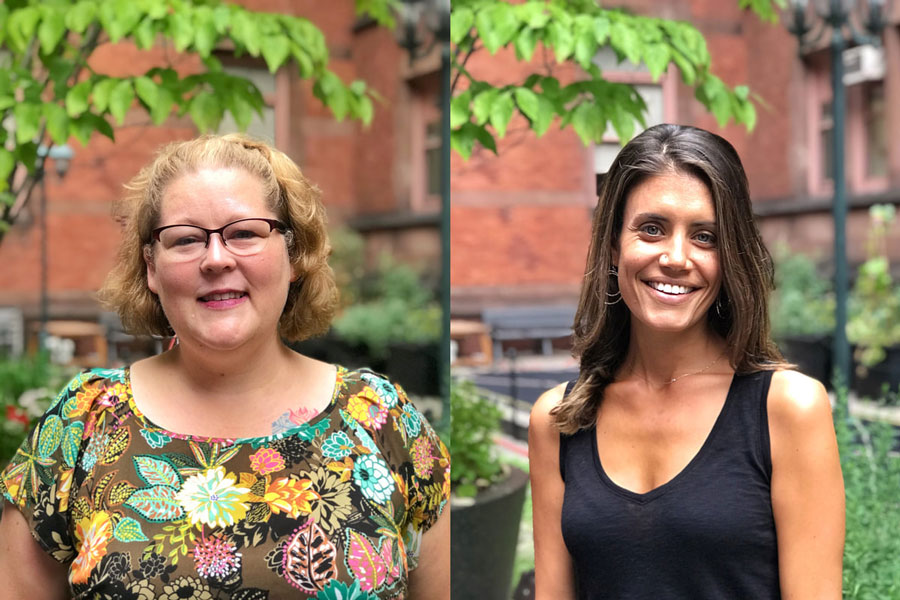“How do I do this online teaching stuff?”
Cristina Compton has heard that question repeatedly since the COVID pandemic knocked traditional classroom learning off the rails in mid-March.
“The pedagogy and practice had been so much about in-person instruction that teachers felt stuck, they felt scared and they felt as if they couldn’t do anything right,” says Compton, Director of Program Development for Teachers College’s Center for Professional Education of Teachers (CPET).
But not in Finland, a nation that that began converting to a hybrid of online and in-person learning seven years ago.
“Teachers moved very quickly to distance learning,” Jari Lavonen, a faculty member at the University of Helsinki, told a virtual audience at the CPET-led 2020 Global Learning Alliance Summit in late August. “There were some problems with access and internet platforms, but not huge ones.”
Lavonen’s presentation, which cited a Finnish National Agency for Education report on the response to the pandemic, was just one example of the lessons shared at the biennial Summit, which gathers school leaders from around the world for timely discussions on educational research, pedagogy and practice. Normally held at rotating sites in Finland, Asia and the United States, the Summit, slated this year for New York City, was held online — a move very much in keeping with its focus on the COVID-prompted shift to online learning worldwide.
People are ready to take a step back to say, ‘OK, I tried that — what worked and what didn’t work?’
— G. Faith Little
“We wanted the Summit to look at what people have done so far, and what can be next,” said G. Faith Little, a Senior CPET Program Manager and Summit co-coordinator. “People are ready to take a step back to say, ‘OK, I tried that — what worked and what didn’t work?’”
[Read a piece by Little on framing strategies for teaching during the ongoing COVID crisis.]
Finnish educators know what works because they’ve been working with hybrid instruction models since 2013, when their country made what Levonen characterized as a “digi-jump” to computer-based final exams and additional online strategies. The big challenge in Finland, then, has been to identify ways to counter social isolation — a problem that some schools solved in part by inviting older students to join one another at virtual pizza parties.

SPARKING CONVERSATIONS Little (left), Compton and other CPET team members feel the Summit launched productive dialogues among participants from around the globe. (Photo: TC Archives)
China, the first nation ravaged by COVID, also struggled with the social-emotional consequences — and not just those affecting students. Chinese teachers, separated from colleagues and students, found themselves “lost and stuck in a deep loneliness,” said Yubin (Leona) Lin, a program director with YouCH EDU, a non-profit professional development organization. “COVID taught us a lesson,” Lin added, “Teachers need their social-emotional connection no matter how independent they might be.”
Chinese schools re-established that connection by facilitating virtual teacher meet-ups — informal professional development sessions that in some instances grew to include educators from the United States, Canada, Egypt and France.
“We’d talk and talk and talk and check in until we felt comfortable,” Lin reported, adding that the process led to “deeper exploration of topics” and “the confidence level to try something new.”
Other presenters flagged the need for increased communication on a variety of fronts.
“You hear ‘location, location, location,’” said Principal Tamala Boyprod Shaw, who in early August welcomed the inaugural class of sixth-graders to the Mississippi Delta Academy, a new charter school she founded. “Well, I say, ‘communication, communication, communication.’ Get plans to students and parents early and often, make sure your decisions are data-based and that parents know their voices are being heard.”
Shaw spoke as part of a panel that featured educators from three other Southern states that reopened schools in August.
Jenan McNealey, a counselor with the Forsyth County Schools in suburban Atlanta, said her district allowed Forsyth families to choose between returning their children to the classroom or continuing their learning at home. To accommodate those that chose the distance option, the district spent three weeks introducing teachers in 38 schools to new virtual learning platforms and modules.
Digital platforms can create innovative pathways for students to learn while maintaining a social-emotional connection with teachers and classmates. Technologies can offer students a portal to document their interests, share a story or introduce classmates to family and community in self-produced videos.
“It was great, because in March we weren’t prepared and it was a mess,” said McNealey.
Tangela Williams, a Learning Community Superintendent with North Carolina’s Charlotte-Mecklenburg Schools, said that, for her district, the miscues of March have served as a teaching moment in the run-up to a 2020-21 school year that will begin virtually. In particular, Williams and other leaders have discovered the advantages of asynchronous digital learning (instruction in which the teacher and students are not all in the same place or interacting in real time.
Asynchronous technology, in Williams estimation, presents a “great opportunity to level the playing field and put our stake in the ground in terms of equity,” precisely because it enables students to rewind and review pre-recorded lectures — and thus, potentially, gain a deeper understanding of difficult course content.
In a similar vein, Compton cited strategies for student engagement employed in a study she designed for a CPET partner school that also underscore the potential of technological advances to improve how young people learn. In particular, she said, digital platforms can create innovative pathways for students to learn while maintaining a social-emotional connection with teachers and classmates. Technologies can offer students a portal to document their interests, share a story or introduce classmates to family and community in self-produced videos. Zoom and Google digital platforms can also encourage small group partnerships that “can get kids talking to one another before moving to large group discussions” around lessons and classroom objectives. Illustrating that point, CPET’s first-ever digital Summit sparked online conversations among participants from around the globe.
Still, Little said the format, mediated by the digital space, still needs to find more spaces for the spontaneous exchange of ideas that take place at conferences where attendees chatted face-to-face: “There is something to be gained by meeting in person to share what we are doing with kids in different places and under different circumstances.”
